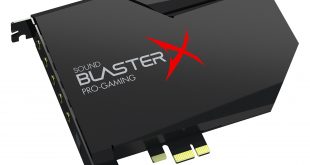When testing high grade audio equipment it is important to not have any weaknesses in the chain. Obviously this can cost a lot of money, but it really is the only way to thoroughly analyse the hardware.
We are using my long term Audeze LCD 2 headphones which I had imported from America last year. These have since been replaced by V3, and high end STAX withstanding, these are probably the best headphones on the market. The price is reasonable too, as I paid around £800 including customs duties.
These headphones use Planar Technology. The Planar Transducers are fundamentally different from conventional cone speakers or dynamic drivers. Planar Magnetic speakers use a flat, lightweight diaphragm suspended in a magnetic field as the driver rather than a cone attached to a voice coil. The diaphragm has a circuit pattern etched into it that, when energized, creates the forces that drive the diaphragm to move in the magnetic field to produce sound. Planar magnetic speakers, when implemented well, have inherent advantages over cone speakers.
First, the driver moves in a more piston-like manner due to the even application of force by the magnetic field surrounding the diaphragm, which reduces distortion effects.
Second, the diaphragm is mounted on all sides, reducing fatigue points; Planar Magnetic speakers employ a tough polymer as the base material, which makes it much more durable than cone diaphragms.
Third, because the diaphragm is very thin, it is also more responsive, leading to more faithful sound reproduction and the crispness of sound that is the hallmark of good quality speakers. And finally, because it is flat, planar magnetic drivers can dissipate heat more quickly using the large surface area of the diaphragm itself, which dramatically reduces the chance of burn-out.
Audeze employs a number of proprietary techniques to improve upon the basic planar magnetic design. Audez’e design uses a very thin, proprietary film for the diaphragm. Once etched, the diaphragm is mounted in tension between two layers of opposing magnets. This mounting process requires great precision, and Audez’e has designed proprietary methods and tools to effect a very consistent and even mount.
This diaphragm manufacturing process has been tuned to ensure a flat frequency response over a wide bandwidth while ensuring a robust diaphragm and maximum efficiency of the driver.
I had cables custom made from the guys at Double Helix which improve bass response, dynamic headroom and soundstaging. These cables alone are the same price as the headphones but it is worth the cost, as the biggest drop in quality with high end headphones will be from using the standard cabling. Sennheiser HD800 owners will understand what I am talking about. We use Nordost cabling elsewhere in the system.
My Little Dot MK VI+ headphone amplifier has been doctored from the reference specifications, with uprated internal power components and new silent fans for airflow. The reference fans used in this unit were quite loud so this was an immediate switch for me. I also tube rolled the MK VI+ swapping the bog standard power valves (‘tubes' to the American readers) for four Tung Sol 7236's (I also like the Tung Sol 5998's), which were ordered specially from a reputable American dealer.
These are classic tubes originating 70 years ago with zirconium coated plate … they cost a lot more than modern day equivalents. They really don't make them like they used to however.
I switch out driver tubes fairly regularly, but keep going back to the Mullard ECC35's for their fantastic presentation. This balanced amplifier … after all my tweaks and upgrades is worth around £1,500, with some of the parts very difficult to source. Getting a matched quad set of mint condition Tung Sol 7236 took me months to source and cost £100 per tube.
It does deliver what I would consider to be ‘perfect' audio reproduction, well to my ears anyway. The sound is warm, yet immensely detailed. As long as im listening to a well recorded CD, the sound is very ‘vinyl' like. Exactly what I want.
When it comes to the quality of a compact disc player, I have yet to hear anything that can quite match the Raysonic CD228 for the combination of warmth and detail. This is a huge, heavy flagship player which is split into two sections. It is crafted from 7mm aluminum panels with extruded corners which are bolted from the inside. I have one of the early prototypes which features the power button on the side of the amplifier section.
The CD player weighs 7kg, and the power supply weighs 10kg. You can see more information on this over here. If you want to see the insides, you can visit this page. The Raysonic CD228 costs around £4,000 but will need to be purchased from a specialist dealer in the United Kingdom, or imported from America and then the power transformer changed to 230v. Buying them second hand in a private sale is risky as the condition of the tubes/valves will be unknown.
The CD228 encloses two C core power transformers, an input cap/coil/cap filter and a supplementary filter choke for additional ripple suppression. Inside are twelve 2200uF/35V and five 10,000uF/16V storage capacitors. The high-voltage supply for the four 6922s of the main unit runs transistors, two 220uF/200V caps and two regulators.
The main unit runs a suspended Philips VAM 1202 transport and Philips SAA servo circuits underneath. The quartz oscillator clock runs at 16.9344MHz while D/A processing is by two dual-differential Burr Brown PCM1792 24-bit/192kHz chips. Op-amp I/V conversion is via BB OPA 2134. There are twelve 10,000uF/25V capacitors, two 220uF/160V units and six large MKP Solen 4.7uF/400V caps.
 KitGuru KitGuru.net – Tech News | Hardware News | Hardware Reviews | IOS | Mobile | Gaming | Graphics Cards
KitGuru KitGuru.net – Tech News | Hardware News | Hardware Reviews | IOS | Mobile | Gaming | Graphics Cards











